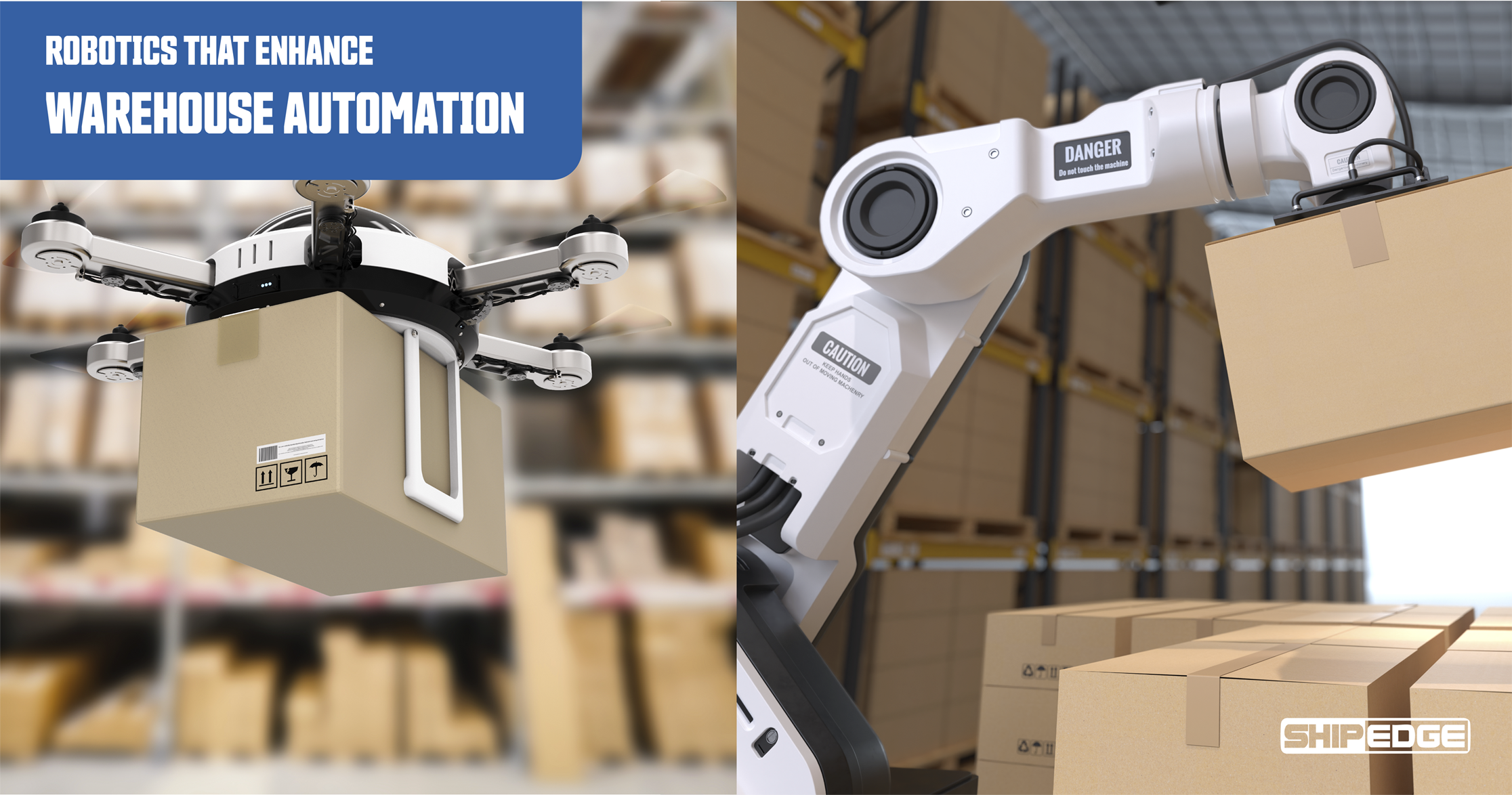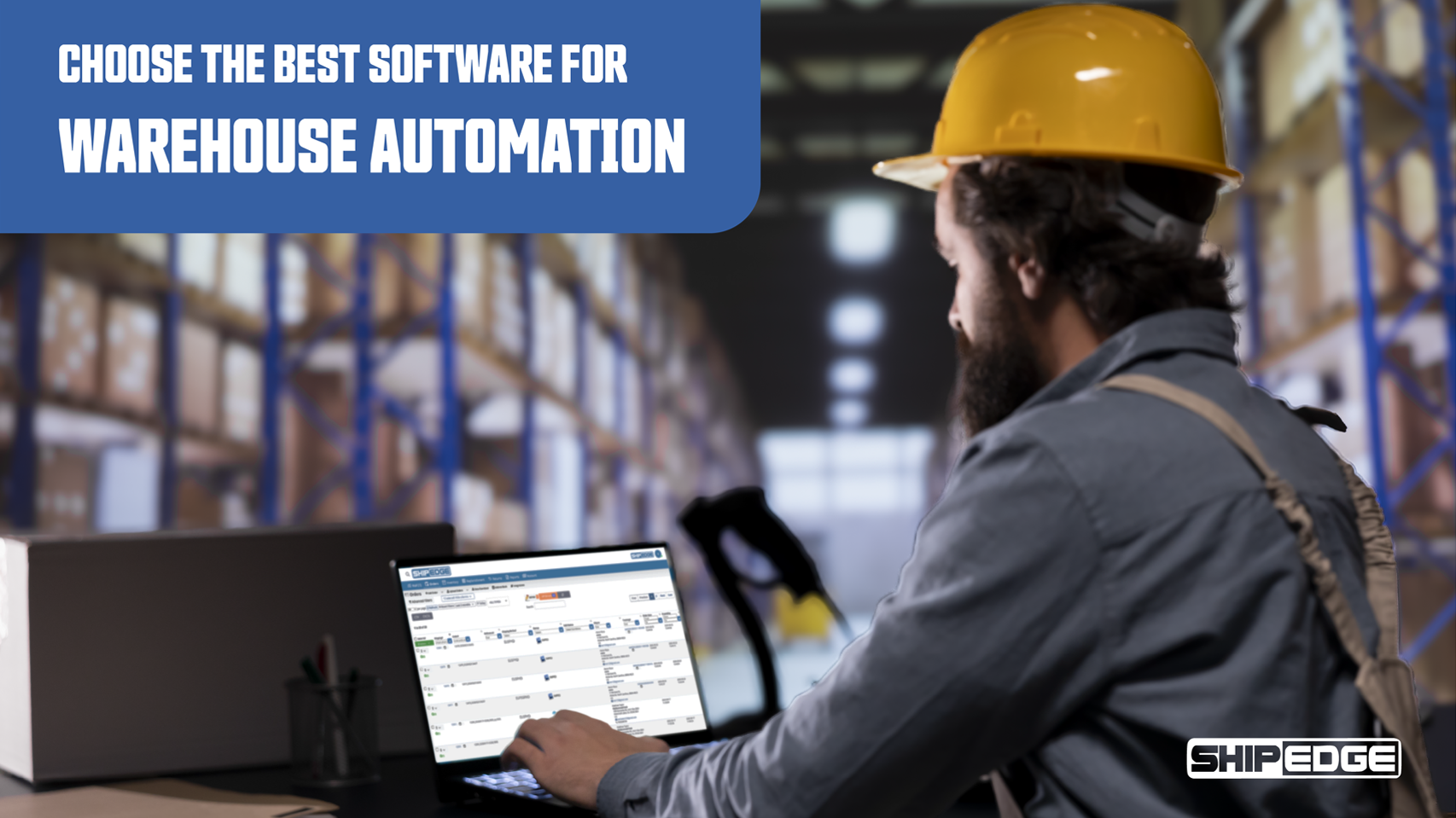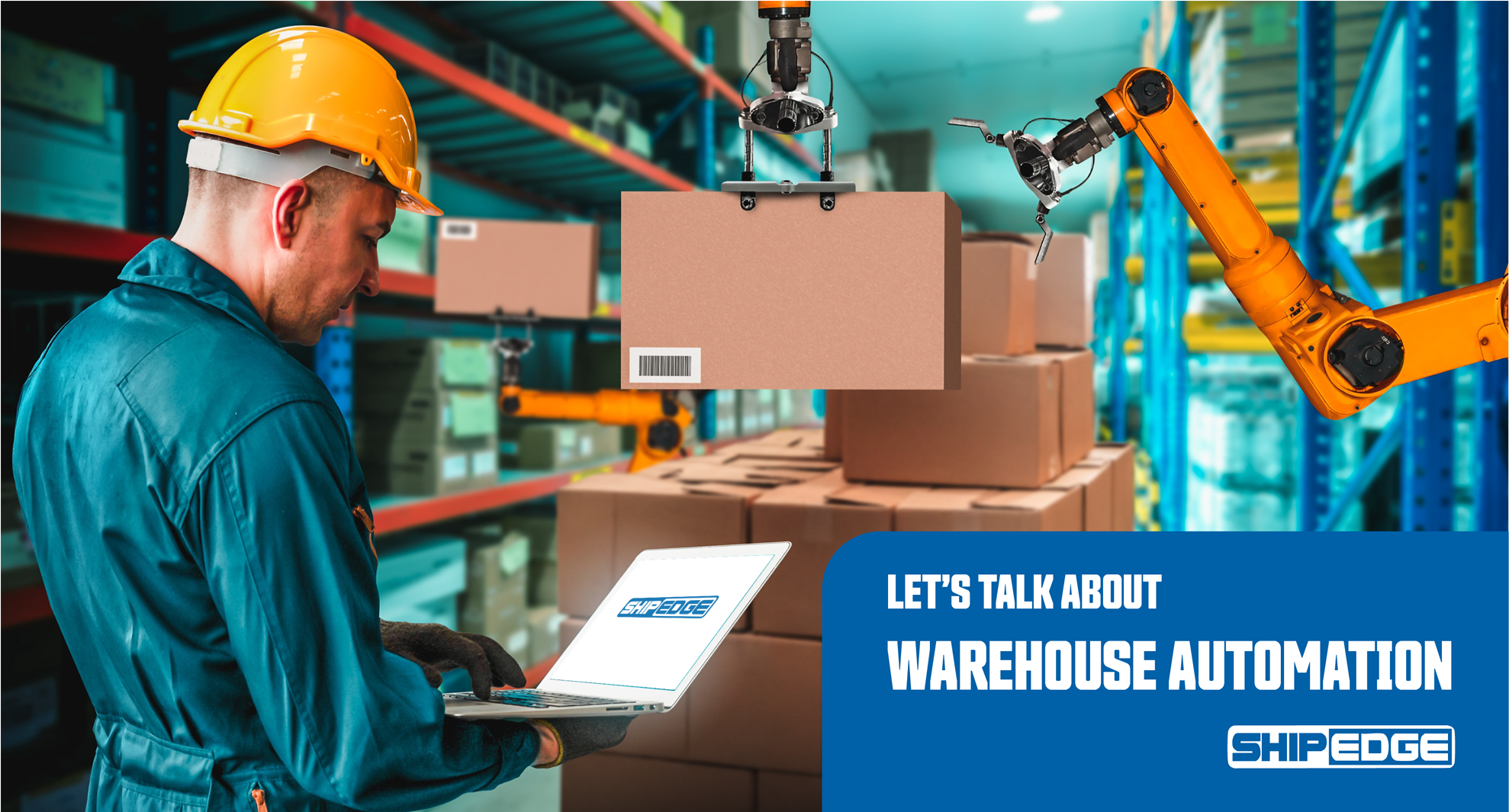Table of Contents
- Understanding the Basics of Warehouse Processes Mechanization
- The current most common warehousing automations in the industry
- Warehouse automation technology trends
- What is Machine learning, and how can it be used in warehouse management?
- Benefits of warehouse automation through implementing warehouse robotics
- Collaborative robots, warehouse drones, automated guided vehicles (AGVs), and predictive maintenance
- Streamlined Order Processing through Digital Automation
- Advanced Inventory Management with Warehouse Automation Systems
- Pick and Pack Optimization using Material Handling Equipment
- Enhancing Shipping Automation for Seamless Logistics
- Overcoming Challenges and Workforce Impact When Implementing Warehouse Mechanization
- Future Outlook. The Development of your warehouse management systems
- How to Get Started with automation solutions for your warehouse facilities
- Choose a warehouse automation software that suits your specific needs
- Frequently Asked Questions
Imagine a thriving storehouse where machines gracefully orchestrate the symphony of operations, minimizing quality errors and boosting productivity. In today’s fast-paced, tech-driven environment, how do you leverage the power of store automation to increase operational efficiency and streamline your deliveries? This isn't just about adding more bells and whistles; it’s about harnessing the right technologies to inspire your logistics operations. Let’s turn the page to the enchanting world of warehouse automation, its future, and how you can take rigid and outdated warehouse management operations to an unmatched level of proficiency.
1. Understanding the Basics of Warehouse Processes Mechanization
Warehouse processes mechanisation is more than just a fancy technical term; it's a shift toward intelligent warehouse systems that leverage technologies to improve the quality of your operations. At its core, warehouse technology aims to streamline processes, increase efficiency, and reduce the manual work that has been the standard in logistics and supply chain management.
Take a closer look at trends in warehouse automation technology. You'll see that automated systems handle periodic tasks, freeing your staff to assume strategic roles rather than being consumed by tedious and repetitive tasks. This competitive advantage has been critical because successful businesses have always prioritized usable skills and precision over manual, inefficient work. With automation and software consolidation, you'll ensure that your inventory flows like clockwork. This automated revolution will streamline your inventory control and management, keeping your business out of the fog of miscalculations and errors through precision. What makes mechanization critical is its ability to collect real-time data. Equipped with this powerful insight, you have the data you need to make well-informed decisions, optimizing operational procedures and resources. This inclusion marks a departure from orthodox methods to dynamic warehouse operations where engineering and human strategy collide in perfect harmony.
2. The current most common warehousing automations in the industry

One of the most common and increasingly utilized automation processes in warehouse management is the use of warehouse management systems (WMS). WMS software automates various warehouse tasks, including inventory management, order processing, picking and packing, and shipping.
Barcode and RFID technologies are also commonly used to automate inventory tracking and management in warehouses. By scanning barcodes or using RFID tags, warehouse staff can quickly and accurately track inventory levels and locations.
Automated sorting and routing systems are another commonly used automation process in warehouses. These systems use conveyor belts, sensors, and software to quickly sort and route items to their appropriate locations within the warehouse.
Another commonly automated process in warehouse management is the use of automated guided vehicles (AGVs) or robots. These systems are used to transport goods within the warehouse, reducing the need for manual labor and increasing efficiency.
Overall, automation in warehouse management processes is becoming more prevalent as companies seek to increase efficiency, reduce errors, and improve overall logistics operations. By implementing automated systems and technologies, warehouses can better manage their inventory, fulfill orders faster, and ultimately deliver a better customer experience.
3. Warehouse automation technology trends
In today's rapidly evolving landscape, staying ahead means keeping an eye on emerging trends that drive store automation to new heights. Today's standout is the emergence of machine learning algorithms, which take predictive analytics in inventory management to a new level. By analyzing past patterns, these algorithms can forecast demand with near certainty, ensuring you always meet market needs.
The integration of the Internet of Things (IoT) in warehouses enables unprecedented real-time monitoring of conditions—from temperature and humidity to stock levels. Increased transparency not only enhances efficiency but also strengthens the integrity of your supply chain by alerting you to potential disruptions before they occur.
Meanwhile, 5G connectivity ramps up speed and reliability for machine-driven systems. With lightning-fast data transfer capabilities and minimal latency, your automated solutions can communicate flawlessly, orchestrating storage warehouse tasks with precision.
Cloud computing also plays a decisive role, enabling broad consolidation of data points across platforms. This interconnection ensures that your automation systems work cohesively, providing an integrated approach to store management.
Moreover, blockchain technology is increasingly being applied to ensure secure, transparent supply chain operations. By employing decentralized systems, blockchain strengthens trust and traceability in transactions and logistics—a match made in heaven for goal-oriented warehouse automation.
4. What is Machine learning, and how can it be used in warehouse management?
Enhances trust and traceability in transactions and logistics—a perfect match. Machine learning is a type of artificial intelligence that allows systems to learn and improve from experience without being explicitly programmed. In the context of warehouse management, machine learning can be applied to analyze and predict based on large datasets.
One of the key advantages of using machine learning in warehouse management is its ability to optimize operations and improve efficiency. By analyzing data such as inventory levels, order fulfillment rates, and product demand, machine learning algorithms can accurately forecast future demand and suggest optimal resource allocation.
Machine learning can also be used to automate routine tasks such as inventory management, routing optimization, and quality control, reducing human error and improving response times. By continuously learning from new data, machine learning algorithms can adapt to changing conditions and make real-time adjustments to improve overall performance.
Overall, machine learning provides significant benefits to the warehouse management industry by enhancing efficiency, reducing costs, and enhancing decision-making processes. As technology continues to advance, we can expect to see even more innovative applications of machine learning in warehouse automation.
5. Benefits of warehouse automation through implementing warehouse robotics

As part of the benefits of warehouse automation, many warehouses today still rely on manual processes for day-to-day operations. Still, the future of warehouse management lies in embracing a wide range of technologies, including physical automation via warehouse robotics. By integrating digital automation and material-handling equipment into the picking process, businesses can reduce human error, increase efficiency, and optimize the utilization of warehouse space. Robotics' predictive maintenance capabilities can also help prevent costly downtime and ensure smooth operations. Embracing these advancements in warehouse automation can make it a key asset for driving business growth.
Warehouse automation, particularly through the use of robotics, has revolutionized the way businesses operate. By implementing a range of technologies to replace cumbersome manual processes, companies can now optimize their warehouse space and improve efficiency. In the future of warehouse management, digital automation, predictive maintenance, and streamlined picking processes are becoming essential components of success. With the aid of material-handling equipment, such as automated guided vehicles (AGVs) and robotic arms, businesses can enhance their operations and drive significant growth. The importance of physical automation cannot be overstated in transforming a traditional warehouse into a key asset for driving business success.
6. Collaborative robots, warehouse drones, automated guided vehicles (AGVs), and predictive maintenance
Warehouse drones, also known as autonomous aerial vehicles (AAVs), are another innovative technology gaining popularity in warehouse automation. These drones are equipped with cameras, sensors, and GPS to autonomously navigate warehouse spaces, conduct inventory checks, and even pick and pack items for shipping. By using drones, businesses can save time and reduce human error in the warehouse, ultimately improving efficiency and reducing costs.
Warehouse drones are beneficial in large warehouses with high shelves, as they can easily access and scan items that may be difficult for human workers to reach. They can also help with inventory management by conducting regular stock checks and updating inventory levels in real-time.
Overall, intelligent machines are a valuable tool for businesses looking to enhance their warehouse automation efforts and improve operational performance. As technology continues to advance, we can expect to see even more innovative uses of drones, automated guided vehicles, and new kinds of robots in warehouse management.
7. Streamlined Order Processing through Digital Automation
Order processing is dramatically accelerated when bolstered by digital warehouse automation systems. As soon as a customer order is placed, the system automatically validates it, checks inventory availability, and routes the information to the fulfillment team. This level of automation is critical in a fast-paced warehouse environment where speed is paramount for customer satisfaction. By minimizing human intervention at the start of the workflow, the system ensures that day warehouse operations begin immediately and without delay. This proactive, instant order handling significantly reduces processing lead times, directly translating into faster delivery schedules for the business.
8. Advanced Inventory Management with Warehouse Automation Systems
Warehouse automation systems are foundational to modern inventory management, transforming manual counting into a real-time, data-driven process. These systems, often powered by WMS software integrated with technologies such as RFID and IoT sensors, eliminate the need for time-consuming manual checks. In the demanding day warehouse operations, automation ensures that every product's location, quantity, and status are instantly updated. This precision reduces errors like stockouts and overstocking, which are detrimental to efficiency. Furthermore, predictive analytics—a feature of advanced warehouse automation systems—can analyze consumption patterns to automatically generate replenishment orders, ensuring a stable and optimized stock level within the warehouse environment.
9. Pick and Pack Optimization using Material Handling Equipment
Pick and pack optimization relies heavily on both software and physical material handling equipment to achieve peak efficiency. Solutions like Automated Guided Vehicles (AGVs) and collaborative robots, directed by the WMS software, implement the Goods-to-Person (GTP) strategy, reducing the walking distance and time for human pickers. The software calculates the most efficient picking routes (batch picking) and directs both humans and equipment precisely within the busy warehouse environment. By leveraging this sophisticated material handling equipment and algorithmic optimization, companies can drastically reduce picking errors and dramatically increase the throughput of their day-to-day warehouse operations, making the process safer and more precise.
10. Enhancing Shipping Automation for Seamless Logistics
Shipping automation provides the final layer of control in the fulfillment process, connecting the internal warehouse environment with external logistics partners. Modern warehouse automation systems integrate directly with carrier software, automatically generating shipping labels, calculating the lowest-cost shipping options, and updating tracking information in real-time. This final step in day warehouse operations eliminates manual data entry, which is a common source of error in shipping. Furthermore, sophisticated automated sorting and conveying material handling equipment can weigh, dimension, and route packages automatically to the correct loading dock for specific carriers, ensuring every parcel is prepared accurately and efficiently for its final journey.
11. Real-world Case Studies. Inventory and Warehouse Management Automation Success Stories
Diving deep into the sea of "storage warehouse automation" reveals stories of achievers who can serve as examples for those seeking to implement it. Amazon, a commercial giant, has significantly powered robotics to enhance order fulfillment processes with considerable efficiency. Their warehouses are a symphony orchestra of bots collaborating with workers, reducing order processing time and optimizing stock management.
Walmart, another retailing titan, utilizes machine-controlled systems in its distribution centers to increase efficiency by more than 30%. By empowering those technologies, Walmart has revolutionized how freight is sized and delivered, ultimately enhancing the customer experience on a large scale.
Then there's Ocado, which combines automated systems to deliver a unique level of precision in handling food delivery orders. With robots operating in synchronized harmony, market items are picked at speeds and with accuracies that orthodox methods can't match.
Meanwhile, DHL has smart warehouses that leverage AI for logistics, making its operations cutting-edge. By adopting AI-driven strategies, DHL continues to elevate its competitive edge in the supply landscape.
Pepsico’s automated facilities stand out as a Testament to enhancing supply chain workflows, which guide the company toward consistent inventory quality and improved operational performance. For them, automation is not a future fantasy; it's a selfsame reality.
12. Overcoming Challenges and Workforce Impact When Implementing Warehouse Mechanization
Adopting automation is no walk in the park, but tackling these challenges head-on can lead to success and impressive returns. One roadblock is the potential high cost of implementing automation systems. However, consider it as planting seeds for future savings that will yet spring up as ablated labor costs and heightened inefficiency across operations.
Take into account that Consider that employer training is a predominant factor in adoption of new technology. It's essential to guide and support your team as they adjust to new systems, offering training that turns apprehension into confidence and skills. Enabling your squad to work harmoniously with these technologies fosters a culture of innovation and discontinuous improvement.
Integrating new systems with the current store may pose difficulties, requiring a well-planned approach. This can be managed by crafting an elaborate implementation plan that fits snugly with your setup. Treading this fine line ensures that automation supplements rather than disrupts your core operations.
Uniform observance is key to ensuring your status systems keep pace with changing demands. By monitoring system performance, you can prevent downtime and address potential issues before they occur.
Lastly, collaborating with experienced engineering science providers lets you overcome technical obstacles with expertise and finesse. Their insights can guide you in selecting appropriate systems, which are generally tailored to your storage warehouse needs.
13. Future Outlook. The Development of your warehouse management systems
Imagine the future of warehousing—a digital revolution meant to transform the supply chain and the supply landscape. Artificial intelligence is reaching new heights, with AI-driven analytics now capable of predicting market trends and coordinating inventory with unparalleled accuracy. This crystal-ball forecasting tool reassures businesses that they can navigate future demand curves with confidence, enabling them to forge powerful new supply chain strategies.
Augmented reality (AR) is set to revolutionize warehouse training, taking operational skills to an exciting new level. AR tools can create immersive learning environments that mimic real-world scenarios, fundamentally accelerating training and preparing workers for the future of warehousing.
Sustainability is doubtlessly a key concern for any future-focused warehouse, and property mechanisation practices aim to establish a greener supply shackle. Embracing eco-friendly solutions ensures that supply chain progress won't come at a cost to the planet.
Ultimately, consider a future where warehousing and customer experiences intersect in news articles, enabling businesses to craft articles of clothing that elevate them above their competition. Increased personalization, driven by data-driven insights, promises customers a service centered on intelligence, unlike any other.
14. How to Get Started with automation solutions for your warehouse facilities
Jumping into the equipment world, Crataegus oxycantha seems daunting. Merely starting on the right foot, with an unstructured approach, sets you on the path to success. You can begin by carefully thinking about your warehouse processes. Identifying bottlenecks and areas that demand improvement will guide you toward desirable mechanization solutions.
Next, join forces with an application adviser to refine and outline your automation strategy. Tap into their expertise to identify and select technologies that align with your storage warehouse operations. By building a photo that seamlessly merges the application with processes, you can maximise the benefits of the condition.
Outlining an implementation timeline with phased upgrades enables a smoother transition through each phase. This bit-by-bit progression paves the way for careful adjustments without disrupting daily storehouse activities.
Training your team is key; introduce them to new automated systems so they can adapt to the new setup. Well-trained employees are assets that transform your store into a performer in a competitive market.
Finally, please monitor and assess the performance of your machine-driven operations. By conducting frequent assessments, you consistently gauge the system's efficiency, refine processes, and seize opportunities for future enhancement.
By embracing automation, you're opening the door to a host of possibilities—each more intriguing than the last. What will your next step be toward realizing the potential of warehouse automation? Engage in this digital shift and experience phylogenesis firsthand.
---
In summary, storehouse mechanization not only increases efficiency and accuracy but also frees up staff for more operational roles, optimizes space utilization, and enhances safety measures. It offers a glimpse into the future, promising property practices, individualized customer experiences, and AI-driven market predictions. Now, consider this: Are you ready to define your warehouse operations and fully leverage the boundless potential of automation? Please engage with these insights and continue the speech communication.
15. Choose a warehouse automation software that suits your specific needs

Warehouse automation software can help streamline and optimize various tasks in warehouse operations. Some of the most common functions that warehouse automation software can help with include:
- Inventory management: Warehouse automation software can help track and manage inventory levels in real-time, ensuring accurate stock levels and reducing the risk of stockouts or overstock
- Order processing: Warehouse automation software can automate the order processing process, from order entry to picking, packing, and shipping. This can help reduce order processing times, improve order accuracy, and increase overall efficiency
- Pick and pack optimization: Warehouse automation software can help optimize pick and pack processes by automating picking routes, organizing batch picks, and providing real-time visibility into order status. This can help reduce picking errors and improve order fulfillment times
- Shipping automation: Warehouse automation software can integrate with shipping carriers to automate the shipping process, including generating shipping labels, calculating shipping costs, and updating tracking information. This can help streamline the shipping process and improve customer satisfaction
The warehouse management industry is constantly evolving, with technological advancements driving greater automation and efficiency in warehouse operations. Companies are increasingly implementing warehouse automation software to optimize warehouse processes, reduce costs, and improve overall productivity.
The most helpful reference is Shipedge, which is a comprehensive, modular, and scalable warehouse automation platform that offers a range of features to help companies manage their warehouse operations more effectively. Shipedge integrates order management, fulfillment, and shipping with existing warehouse management systems, providing a seamless, robust solution for businesses of all sizes.
With features such as real-time inventory tracking, order processing automation, pick-and-pack optimization, and shipping automation, Shipedge can help companies enhance their warehouse operations and remain competitive in today's rapidly evolving marketplace. By leveraging warehouse automation software such as Shipedge, companies can streamline operations, reduce costs, and ultimately improve customer satisfaction.
16. Frequently Asked Questions
16. 1 What is mechanization in a warehouse?
Automation in stores involves using technology and systems to perform tasks traditionally performed by workers. This can include conveyor belts, robotic arms, mobile robots, warehouse drones, and software package solutions that support inventory management and order fulfillment. By reducing manual labor, warehouse mechanization enhances efficiency, accuracy, and productivity, finally speeding up the delivery process and reducing errors.
16.2 What are the four types of warehouse automation?
On that point are four intense types of storage warehouse automation:
- Goods-to-Person (GTP). Automation systems deliver products directly to workers, minimizing travel time
- Machine-driven Storage and Machine operation Systems (as/rs). These systems mechanically place and retrieve items from defined storage locations
- Conveyor Systems. Put-upon for moving products around the warehouse with efficiency
- Robotic Picking. Involves collaborative robots picking and handling products, improving speed and precision
16.3 Which types of companies can especially benefit from warehouse automation?
Companies across all industries can benefit from automating their warehouse processes. Some industries that can see significant improvements include e-commerce, retail, manufacturing, food and beverage, pharmaceuticals, and logistics. By automating tasks such as picking, packing, sorting, and inventory management, companies can increase efficiency, reduce errors, and improve overall productivity. Additionally, companies with high order volumes, complex inventory management needs, or seasonal demand fluctuations can particularly benefit from warehouse automation solutions.
16.4 Who is the leader in storage warehouse automation?
Companies such as Amazon, Dematic, and Swisslog are recognized leaders in warehouse automation. Amazon has revolutionized fulfillment with its robotic systems and predictive analytics, offering a glimpse into the future of warehouse operations. Dematic, a subsidiary of the Kion Group, provides solutions for material handling automation, including conveyor systems and robotic picking. Swisslog is recognized for its world-class automated warehousing and order fulfillment systems, leveraging robotics and software to manage inventory and enhance delivery.
16.5 What type of warehouse automation software would be best for my type of business?
Shipedge is a warehouse automation software that would be best for your type of business, as it offers a comprehensive solution for efficiently managing your warehouse operations. With its modular, scalable design, Shipedge can adapt to your business's specific needs and streamline processes such as order management, fulfillment, and shipping. Additionally, Shipedge is cross-platform compatible, giving you the flexibility to access and manage your warehouse operations from anywhere. Overall, Shipedge is a robust and versatile automation software that can significantly benefit your business.


